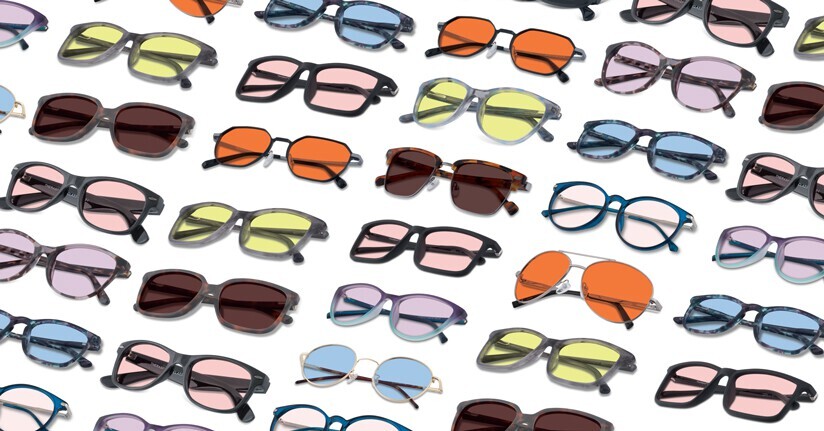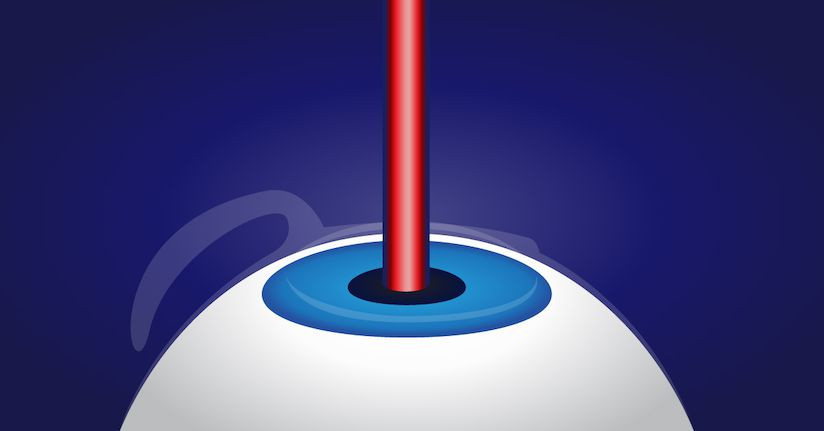Short- and Long-Term Light Sensitivity after LASIK surgery
LASIK surgery is a relatively low-risk corrective vision procedure with generally short healing times. However, although it happens only rarely, the LASIK procedure can lead to visual symptoms like glare, halos and double vision. In addition, light sensitivity following LASIK may also be present and can be a frustrating part of the recovery process, and we detail how it affects patients below.
How LASIK surgery can cause light sensitivity
During the LASIK procedure, the corneal tissues are altered, and there is a permanent change in the shape of the eye—which can lead to light sensitivity during the healing process. For those recovering, they should be patient and expect time for the corneal tissue to fully heal.
Although severe complications of LASIK are rare, some patients will experience ongoing light sensitivity and photophobia following the surgery. Researchers note that in those who experienced these symptoms, they were found to have increased activity in the visual cortex of the brain, which is responsible for processing light and vision-related stimuli. This translated to discomfort when exposed to bright stimulus as well as glare, starbursts and other visual side effects.1 This "activation" within the brain is not unlike what has been observed in other patients with chronic photophobia (such as from light-sensitive migraine).2
Temporary light sensitivity as a side effect of LASIK
For most of the patients who experience any visual symptoms, the light sensitivity following LASIK is temporary and often resolves within a week. At minimum, they can expect a near-complete reduction of photophobia within 3 months. It is also important to note that excessive tear production and foreign body sensation (the feeling that something is in the eye) are also common during this period.3 These issues can also create the feeling that light is overly painful or unpleasant.
Experts have also used the term "transient light sensitivity syndrome" (TLSS) to describe the onset of extreme and sudden light sensitivity several weeks after the operation—especially in the absence of other visual symptoms or negative outcomes from LASIK. It only seems to affect a small number of patients and does not last very long with appropriate treatment (such as anti-inflammatory steroids).4 Even more rare but no less real are some case reports in which patients develop photophobia and other visual symptoms nearly a decade later.
Chronic light sensitivity after LASIK
For some, light sensitivity can persist beyond the normal healing time. One study showed that more than a quarter of physicians who underwent LASIK had a noticeable (although low-impact) difficulty with the symptom an average of one to two years after the procedure.5 This is unlikely to represent chronic photophobia, but it is still an important part of the patient experience. In addition, other evidence has suggested that a small percentage (between 5 and 7 percent) have worsening sensitivity to light a few months post LASIK.
In fact, here is one patient description as shared on Reddit:
"[My only issue after LASIK] is this lingering photophobia. It started the week after the surgery, shortly after going off the steroid drops. Lasted a week or so then went away completely for a week. But then it came back and has been lingering ever since. In sunlight I squint even with polarized sunglasses on. But the major irritant is the iPad and cell phone screen. I have them very dim and the blue light filter on but can still only use them for a few minutes before feeling eye strain in the back of my eyes which often will lead to a migraine-like headache."
The intensity of these photophobic symptoms cannot be ignored, even if only a handful of LASIK patients experience them.
Comorbid Dry Eyes Cause Light Sensitivity
Symptoms of chronic dry eye following LASIK can be a significant cause of photophobia. Up to 95% of patients who underwent LASIK report immediate symptoms of dry eye, with nearly two-thirds reporting symptoms one month following the procedure.6 Although these issues typically diminish not long after, there is still a significant percentage (perhaps as high as 40 percent) that have lasting dry eye complaints for at least six months post operation, which unfortunately carries a high risk and likelihood of photophobia as a side effect.
Interestingly, it is thought that nerve damage or dysfunction may be responsible for this chronic dryness, although altered tear production and corneal sensation may also play a role. Medical professionals have even adopted the diagnosis of corneal neuralgia to describe these unrelenting dry eye symptoms that manifest with no direct post-LASIK complications. All of the patients suspected of this eye disorder had to endure painful light sensitivity, eye pain and other problems.7
Tips for improving LASIK-caused light sensitivity
If you begin to experience photophobia and light sensitivity shortly after undergoing LASIK, the important thing is not to panic. As we have shown, it can be one of the regular side effects a few days after the procedure. If this is the case, simply make sure you follow your doctor’s orders during the recovery period, and it typically resolves on its own.
However, there are a few signs to which you should pay attention that may indicate that your light-sensitive reactions are more serious. These might include:
- Onset of severe or debilitating light sensitivity that worsens over time
- Photophobia that lasts more than a few days or weeks after LASIK
- The presence of additional symptoms, e.g. headache or face/eye pain
- Light sensitivity that develops several weeks after the post-LASIK healing period
If you experience any of these issues, you should share the information with your eye doctor to get to the root cause and help determine an appropriate treatment regimen.
In addition, there are several other helpful tips for improving symptoms of light sensitivity such as: avoiding direct eye exposure to bright indoor and/or outdoor light; wearing dark and polarized sunglasses outside; limiting screen exposure particularly during the healing phase and/or when you are symptomatic; wearing a wide-brimmed hat to block overhead light; and opting for dimmer and/or natural lighting when available. Just remember, you do not want to hide in the dark too long because it can make photophobia more prominent over time.
TheraSpecs precision-tinted glasses can also help those who develop ongoing or chronic photophobia. They have a tremendous track record of reducing the discomfort and pain of artificial light exposure for patients with these strong sensitivities.
References:
1Malecaze FJ, Boulanouar KA, Demonet JF, Guell JL, Imbert MA. Abnormal activation in the visual cortex after corneal refractive surgery for myopia: demonstration by functional magnetic resonance imaging. Ophthalmology. 2001;108:2213–2218
2Rossi HL, Recober A. Photophobia in primary headaches. Headache. 2015;55(4):600–604. doi:10.1111/head.12532
3Wu Y, Tian L, Wang LQ, Huang YF. Efficacy and Safety of LASIK Combined with Accelerated Corneal Collagen Cross-Linking for Myopia: Six-Month Study. Biomed Res Int. 2016;2016:5083069. Epub 2016 Sep 4.
4Muñoz G, Albarrán-Diego C, Sakla HF, Javaloy J, Alió JL. Transient light-sensitivity syndrome after laser in situ keratomileusis with the femtosecond laser Incidence and prevention.J Cataract Refract Surg. 2006 Dec;32(12):2075-9.
5Pasquali TA, Smadja D, Savetsky MJ, et al. Long-term follow-up after laser vision correction in physicians: Quality of life and patient satisfaction. J Cataract Refract Surg. 2014;40:395–402.
6Wallerstein A, Jackson WB, Chambers J, Moezzi AM, Lin H, Simmons PA. Management of post-LASIK dry eye: a multicenter randomized comparison of a new multi-ingredient artificial tear to carboxymethylcellulose. Clin Ophthalmol. 2018;12:839–848. Published 2018 May 7. doi:10.2147/OPTH.S163744
7Theophanous C, Jacobs DS, Hamrah P. Corneal Neuralgia after LASIK. Optom Vis Sci. 2015 Sep;92(9):e233-40. doi: 10.1097/OPX.0000000000000652.

TheraSpecs® Glasses for Light Sensitivity
Find the glasses that fit your needs and lifestyle, and stay protected from screens, fluorescents, unwanted blue light, sunlight, flashing lights, and more.
Shop Now



